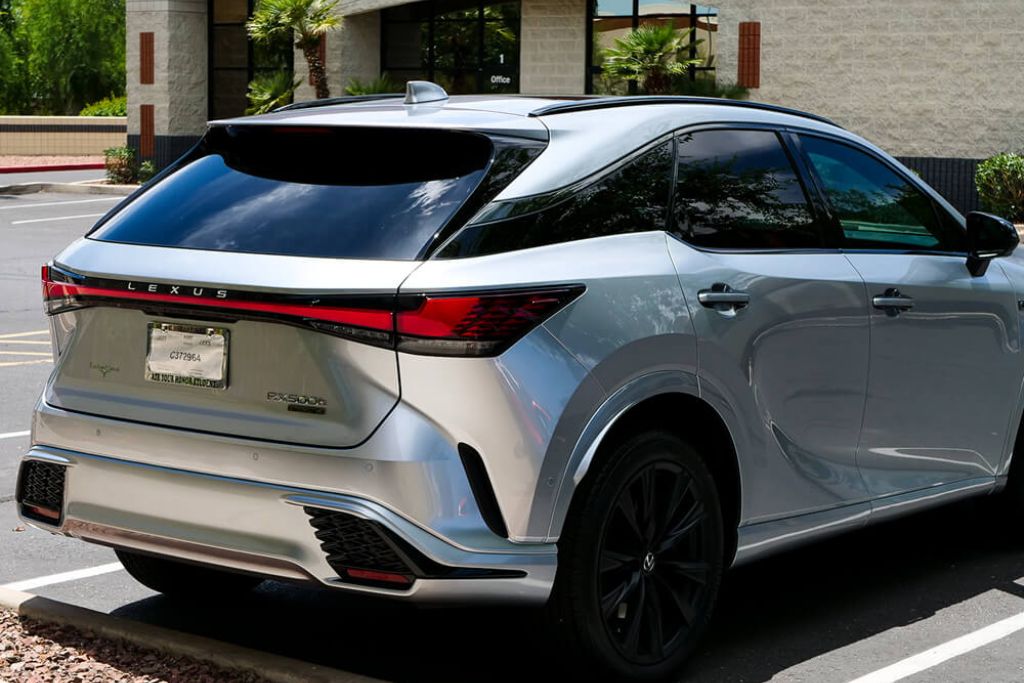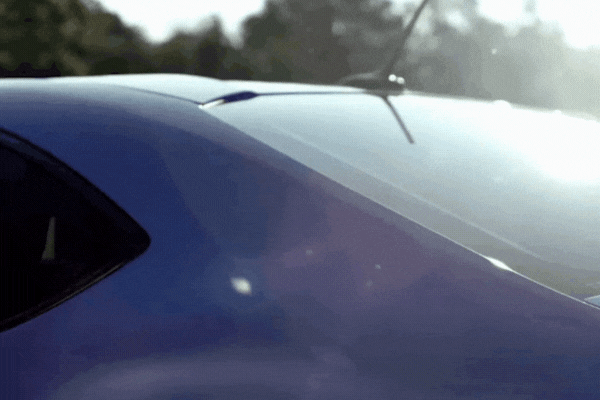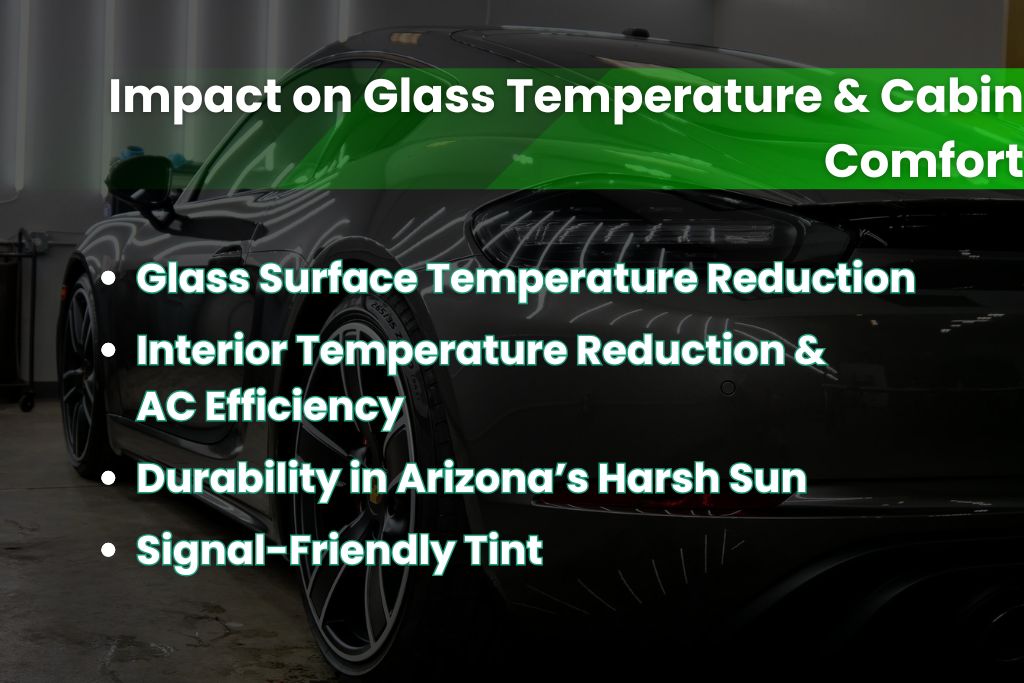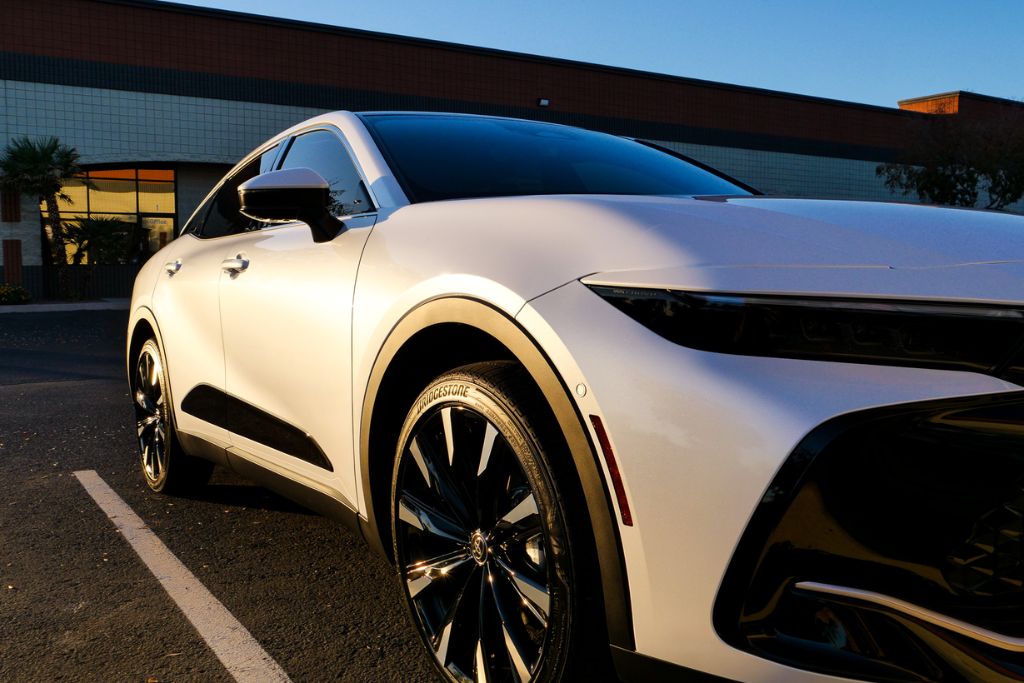Here in Surprise, Arizona, our summers routinely hit triple-digit temperatures, so it’s no wonder car owners ask us at 48 Detailing: does ceramic tint block heat? You bet it does. It’s not just about reducing glare or looking cool – it’s about real, measurable reductions in glass temperature, interior heat, and cooling system strain.
Why Arizona Needs Superior Heat-Blocking Film

Arizona’s sun packs powerful infrared radiation, which heats your car glass quickly, sometimes hotter than the asphalt outside. That heat seeps into your cabin, overworking your AC, causing fading leather or cracked dashboards, and making your ride uncomfortable before you even buckle up.
How Ceramic Window Tint Reduces Glass Temperature

Infrared Radiation Rejection & Solar Energy Transmission
Ceramic tint works by reflecting or absorbing up to 96% of infrared rays, which are invisible wavelengths that increase your glass temperature.
This infrared rejection ceramic tint dramatically lowers the amount of solar energy transmitted through your windows, keeping the glass surface cooler.
Why does infrared radiation influence glass temperature?
Infrared rays penetrate deeply into glass, creating heat that radiates into your car. Blocking IR reduces that energy transfer, meaning the glass stays cooler even when exposed to direct sunlight.
Visible Light Transmission (VLT) & Heat Gain
Unlike darker metallic or carbon tints, high-quality ceramic tint allows ample visible light to pass through while still blocking heat. That means you can maintain high visibility without sacrificing heat control.
Why does visible light transmission (VLT) affect heat buildup?
Higher VLT allows more light and heat to pass through to your interior. Ceramic tints strike a winning balance: light enough for clear vision, yet engineered with nano-ceramic particles to reject most solar heat.
Ceramic vs. Carbon or Metal Tints
Thanks to nano-ceramic particles and non-metallic film technology, ceramic tint rejects heat more effectively than carbon or metallic alternatives, and it won’t interfere with cell phone, GPS, or radio signals (we’ll discuss this further later).
Why do ceramic particles reject IR better than carbon or metal tints?
Ceramic particles are engineered at the molecular level to reflect IR wavelengths without relying on pigments or metals, which are less efficient and often block signals.
UV Protection & Thermal Insulation
Most of our ceramic window films block up to 99% of UV rays, offering both skin protection and reduced heat buildup. While UV doesn’t heat things directly, it accelerates fading and cracks in interiors.
Why is UV protection part of heat reduction performance?
UV-blocking improves overall thermal insulation and slows material degradation, helping maintain a cooler, more durable cabin environment over the long term.
Impact on Glass Temperature & Cabin Comfort

Glass Surface Temperature Reduction
Our Gold Dual-Layer Ceramic Tint (IR-rejecting up to 96%, UV-blocking 99%) significantly lowers glass surface temperature compared to untreated windows. That’s a significant win for Surprise drivers looking to avoid stepping into a sweltering car.
Interior Temperature Reduction & AC Efficiency
Cooler glass equals cooler cabin. You’ll notice the AC doesn’t work as hard, and your cabin stays more comfortable sooner, plus you may see slight efficiency improvements.
Why does blocking IR reduce interior heat?
By cutting off heat at the glass before it enters the car, interior air stays cooler right from the start, without waiting for the AC to catch up.
Durability in Arizona’s Harsh Sun
Ceramic tints don’t fade or degrade under daily heat exposure. Their molecular structure resists discoloration and bubbling, helping deliver long-lasting performance even in hot Phoenix-area conditions.
Why is ceramic tint more durable against heat over time?
Unlike metal or dyed films, ceramic particles are inert and heat-resistant, so they won’t change color, crack, or peel even under intense sunlight years later.
Signal-Friendly Tint
Ceramic tints won’t interfere with electronic signals—no dropped calls, no spotty GPS, no radio static.
Why does ceramic tint not interfere with electronic signals?
Because ceramic films use non-metallic technology, there’s no conductivity to block or distort wireless frequencies.
Why Lower Glass Temperature Makes a Difference

Reducing the glass temperature means less radiant heat ever reaches your dashboard or upholstery. That preserves your vehicle’s interior, helps prevent odors and upholstery cracks, and keeps you driving more comfortably even before turning on the AC.
Installation Matters: Avoiding Common Pitfalls

Even top-tier ceramic tint can underperform if installed poorly. Air bubbles, dust contamination, or incomplete edge sealing can compromise heat blocking.
Why might poorly installed tint reduce heat-blocking effectiveness?
Imperfections in the film or improper adhesion allow sunlight to sneak through gaps or cause heat buildup under bubbles, negating much of the intended benefit.
How 48 Detailing Gets It Right in Surprise, AZ

At 48 Detailing, we follow a meticulous installation process:
- Professional glass cleaning – no dust or oils left behind
- Precision laser-cut film tailored to each vehicle
- Expert application with proper edge sealing for long-term durability
We offer a Gold Dual-Layer Ceramic Tint package with superior IR rejection, UV protection, and a lifetime warranty. Learn more about the long-term value of ceramic window tint in Surprise, AZ, and why so many of our neighbors choose it for sustained comfort and protection.
Conclusion
Yes, ceramic tint truly does block heat, and it does it well: lowering the glass surface temperature, reducing cabin heat, extending the interior’s lifespan, and offering long-term peace of mind. For drivers in Surprise, AZ, it’s a high-value upgrade tailored for our blazing climate.
If you’re ready for a cooler ride, visit our car window tinting service page and discover how 48 Detailing’s professional-grade ceramic tint can help you beat the heat – comfortably and reliably.
FAQ
Does ceramic tint block more heat than regular tint?
Yes – ceramic tint blocks significantly more infrared heat than traditional dyed or carbon options, helping keep glass and interiors cooler.
Why does ceramic tint block more heat than regular tint?
Its nano-ceramic composition reflects IR waves without relying on color or metal, improving heat rejection without reducing VLT.
Why does infrared radiation influence glass temperature?
Infrared light generates heat when absorbed by glass, raising surface temperature and transferring warmth inside your car.
Why does blocking IR reduce interior heat?
Preventing IR from penetrating glass means less radiant heat entering the cabin, keeping the air cooler.
Why do ceramic particles reject IR better than carbon or metal tints?
Ceramic uses engineered nanoparticles that reflect heat on a molecular level, more effectively and without signal interference.
Why is UV protection part of heat reduction?
UV rays accelerate interior degradation and can add to overall energy absorption, so blocking UV helps insulate and preserve cabin surfaces.
Why does VLT affect heat buildup?
Higher visible light transmission correlates with more solar heat entering, so optimized ceramic tint balances visibility with heat control.
Why is ceramic tint more durable against heat over time?
It’s inert and stable, resistant to fading, bubbling, or discoloration even under extreme heat cycles.
Why might poorly installed tint reduce heat-blocking effectiveness?
Installation flaws, such as bubbles or poor edge sealing, allow sunlight to penetrate, negating much of the tint’s protective performance.
Why does ceramic tint not interfere with electronic signals?
Because it’s non-metallized, there’s no conductivity to disrupt wireless frequencies, such as GPS, Bluetooth, or radio signals.


